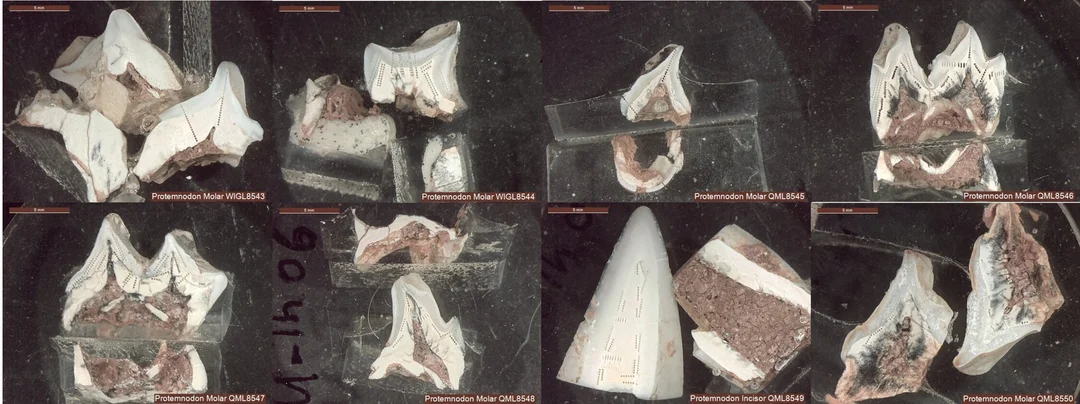
Giant Extinct Kangaroos: A Homebody Habit That Led to Extinction
New research sheds light on the intriguing fate of Australia's giant kangaroos, revealing that their preference for staying close to home may have contributed to their extinction in the face of climate change. Published in PLOS One by Christopher Laurikainen Gaete of the University of Wollongong and his team, this study explores the home range behavior of the prehistoric kangaroo Protemnodon and its eventual downfall.
Traditionally, larger mammals are thought to have broader foraging ranges; however, this research presents findings that challenge that notion. By analyzing strontium isotopes from fossilized teeth of Protemnodon in ancient rainforest deposits at Mt. Etna Caves, Queensland, scientists discovered that these giant herbivores had a remarkably limited foraging area. The isotopic data matched only local geological formations, suggesting a habitat preference that may have worked against their survival as conditions changed.

Previous studies suggested that their immense size hindered long-distance travel, making Protemnodon less adaptable when faced with the increasing aridity that disrupted their lush rainforest ecosystem roughly 280,000 years ago. As climate change rendered their once-stable habitat inhospitable, these large kangaroos could not migrate to more favorable conditions due to their limited range.
Laurikainen Gaete remarked, "Using data from modern kangaroos, we predicted these giant extinct kangaroos would have much larger home ranges. We were astounded to find that they didn't move far at all, with ranges mirroring smaller modern kangaroo species." This revelation offers valuable insights into the behavioral ecology of megafauna in changing environments.
Additionally, Dr. Scott Hocknull hailed the new isotopic techniques as revolutionary for paleobiology, suggesting, "It’s like Paleo Big Brother. We can track individuals' movements and their entire life cycles through these fossils, offering an unprecedented view into their ecology and adaptations."

In essence, this study not only emphasizes the importance of habitat stability for large herbivores but also raises critical questions regarding how modern-day species will cope with rapidly changing climates. The fate of Protemnodon serves as a cautionary tale about the relevance of adaptability in the animal kingdom.
As we reflect on the extinction of these remarkable creatures, it prompts us to consider how our current actions are influencing today's wildlife. Will we heed the lessons of the past to ensure the survival of our existing species? We welcome your thoughts and comments below, as conversations on these topics are more vital than ever.